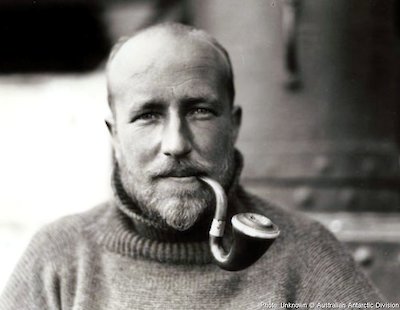Edward Frederick Robert Bage
AAE position: Astronomer, assistant magnetician, recorder of tides
In their own words
After lunch (taken at 6.30pm) we hoisted our Union Jack and Commonwealth [of Australia] Ensign, giving three cheers for the King –willing but rather lonesome away in here. We searched the horizon with our glasses but could see nothing but snow, undulating and sastrugi covered.
— Bage in AAE Scientific Reports writing of the Southern Sledging Party’s attainment of its ‘furthest south’ on 20 December 1912
Born in 1888, Bage had graduated in engineering at the University of Melbourne and become a junior officer of the Royal Australian Engineers before joining Mawson’s men aboard Aurora in 1911. During the first year he was given charge of astronomical and tidal observations and maintaining chronometers.
Bage was leader of the Southern Sledging Party — the other members were photographer Frank Hurley and magnetician Eric Webb — charged with locating the shifting South Magnetic Pole. The mission involved a 1,000 km trek across the featureless Antarctic ice plateau.
The three eventually reached the vicinity of the shifting South Magnetic Pole about 300 km northwest of the spot where Mawson and two others had calculated its position four years earlier. On the return journey they missed a depot and were forced to march on low rations to reach Cape Denison.
Bage was among the group volunteering to remain at Cape Denison for a second year to help find the missing Far Eastern Party. Throughout the second year he continued the magnetic observations and looked after stores.
On the outbreak of war after his return to Australia, Lieutenant Bage was made second in command of the Third Field Company of Engineers. He was promoted to captain before taking part in the landing at Gallipoli. Twelve days later, on 7 May 1915, he was dead, killed by Turkish machine gun fire while marking out a trench line near Lone Pine.

